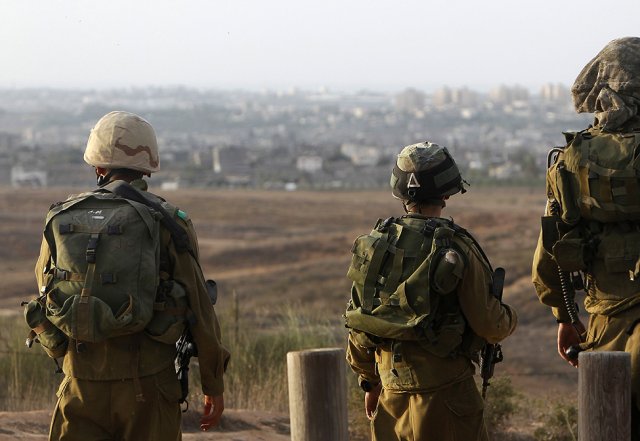
Israel’s July-August war on Gaza, under the pretext of Operation Protective Edge to counter Palestinian rocket fire, demonstrated why it will never defeat the Palestinian resistance.
Israel formally withdrew its troops from Gaza in 2005, yet has retained absolute control over the strip via its siege.
Israel controls everything going in and out of Gaza. It officially imposed its blockade and a “buffer zone” inside Gaza that led to 20% of the strip being declared a no-go area for Palestinians.
The impact of this move, which was supported by neighbouring Egypt, was to convert life in Gaza into a question of simply surviving. Palestinians in Gaza were not allowed to leave the strip, and to fish or farm in the buffer zone brought with it the real risk of being shot dead.
Despite these conditions, Gazans have not resigned themselves to passively waiting for handouts, nor do they view themselves as merely victims.
The spirit shown by Palestinian resistance fighters during the recent conflict shows Gazans' determination to persevere, despite all the limitations that life in the besieged territory imposes.
The creativity born from need helped them develop new ways to survive. Through this process, Gaza's tunnels became a lifeline for the territory.
Every time former Egyptian dictator Hosni Mubarak closed one, or Israel bombed one, two new tunnels were built. They were used to smuggle almost everything into Gaza, from machinery to fuel, medicines and even people.
The 2011 Egyptian revolution and subsequent election of Mohamed Morsi brought a tiny amount of respite, but it did not last long.
Under President Abdel Fattah el-Sisi ― who deposed Morsi in a military coup ― strict controls have been reimposed. Many more tunnels have been destroyed as the regime seeks to prove its usefulness to Israel and the United States.
The Palestinian Authority (PA) in Ramallah never offered to help besieged Gaza. It was more concerned with reaching an agreement with Israel that could facilitate the demise of Hamas, which governs the strip.
In the end, however, the extremism of the Israeli right ended up alienating the PA, despite its desire to isolate Hamas.
The logical next step was to push for greater Palestinian unity, something many saw as a concession to Fatah, which runs the PA.
The possibility of greater collaboration between the PA and Hamas, combined with the reactions of the US and European governments, provoked great exasperation in Israel.
This exasperation, however, was not due to any supposed radicalisation on the part of Hamas. In fact, the overthrow of Morsi, the ongoing crisis in Syria and divisions among the region's Shia Muslims, had all acted to pressure Hamas into making concessions and shifting to the right.
The real motivation behind the attack was the fact that Israel was much more comfortable confronting a divided Palestinian movement and a Hamas that was easy to demonise, than dealing with the prospect of a process of Palestinian unity that included a moderated Hamas.
The killing of three young settlers in June gave Prime Minister Benjamin Netanyahu the opportunity to test Gazans and Hamas.
Netanyahu promised that the offensive would succeed in disarming or eradicating Hamas and other resistance groups. But he fell a long way short of reaching this goal.
It was clear from the start that for Israel, it was not going to be as easy as expected to defeat the resistance.
Netanyahu's plan was to make the Palestinian resistance pay as high a price as possible. Israel combined air, naval and territorial bombardments with a ground invasion of Gaza involving tanks and troops.
More than 2200 Palestinians died, including about 600 children, while a further 10,000 were left wounded. Many schools, mosques, hospitals and houses were also destroyed. But all this destruction was not enough to give Israel the result it expected.
As is usually the case, both sides came out of the conflict claiming victory. However, the evidence points to an Israeli defeat.
The people of Gaza showed an enormous ability to respond militarily. They launched rockets and mortars, and were able to defend many of the tunnels.
The deaths of 60 Israeli soldiers and the realisation that victory could only be achieved through years of occupation and a high number of casualties, led to Israel’s decision to withdraw from Gaza.
Hamas came out strengthened, a fact reflected in its confidence to demand a key role in future negotiations and its linking of a ceasefire to freeing political prisoners and the lifting the blockade.
Internationally, Israel also faced a setback. Israel bet on the fact that its actions would go largely unnoticed in a region where more than 500,000 people had been killed in the Iraq war, 150,000 have so far died in Syria’s ongoing civil war, and unrest continues to rule in Libya while 60,000 political prisoners continue to fill up Egyptian jails.
Instead, the world responded. Demonstrations took place globally and many governments condemned the invasion. In Latin America, some went as far as to withdraw their ambassadors from Israel.
Operation Protective Edge made clear that Israel’s recurring military attacks on Gaza are the result of its ongoing occupation of Palestine.
This is not a confrontation involving “extremists” on both sides. Rather, the Palestinians are waging a struggle of national liberation similar to that carried out against colonial oppressors in countries such as Vietnam and Algeria.
Hamas’s popularity is based on the fact it has to date proven to be a useful instrument of resistance.
Israel may be able to kill large numbers of people, inflict tactical defeats, weaken Hamas’ military capacity and destroy Palestinian infrastructure. But they will never be able to defeat the Palestinian peoples’ resistance to colonial occupation.
Like the article? Subscribe to Green Left now! You can also like us on Facebook and follow us on Twitter.